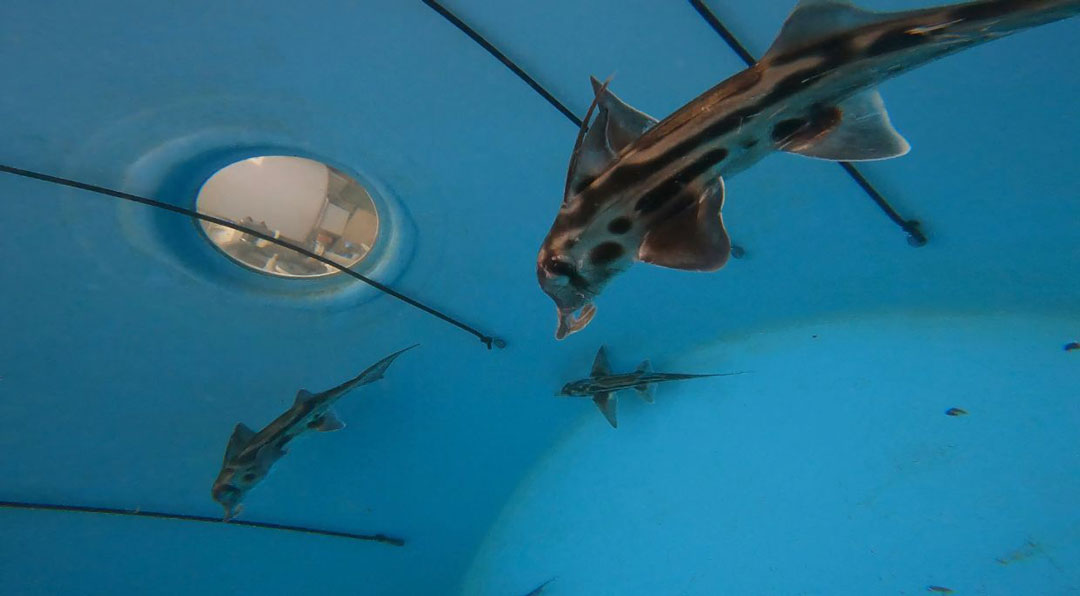Noisy ocean
What are the impacts on the ghost sharks?
The ocean is far from silent. Humans are increasing the sound levels of almost all world waters, with noisy activities: shipping, seismic surveys, construction work, recreational activities… These noise sources can impact marine life directly by injuring their ears, affecting their stress levels and their well-being in general. But human-made noise can also mask important biological sounds in the environment, normally used by marine mammals, fish, and invertebrates to feed, reproduce, and detect predators.
The impact of human-made noise on cartilaginous fishes (sharks, rays and chimaeras) is poorly known. Australian ghost sharks are chimaeras, usually living in deep water but travelling into the shallows to reproduce. They may use their sense of hearing to navigate and/or find prey in their environment. As they enter busy bays to reach shallow water and cross shipping channels, boat noise may alter their physiology and behaviour.

Elephant fishes in the tank. Photo © Lucille Chapuis
We are currently testing captive ghost sharks by exposing them to boat noise and studying the impact of playback noise on their swimming behaviours. We feed them with a mix of small mussels and shrimp. These creatures seem to come from another age. At one time, as indicated by fossil records, chimaeras were a very diverse and abundant group populating the seas of the planet. They are thought to have originated more than 420 million years ago. Despite their secluded habits in the depth of the ocean, some chimaera species may be currently threatened by overfishing through bycatch or commercial exploitation.

Feeding time for the elephant fishes. Photo © Lucille Chapuis
